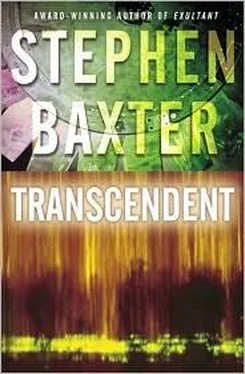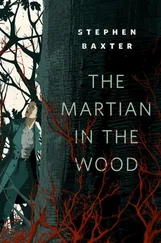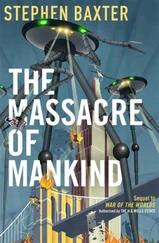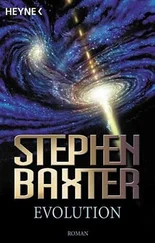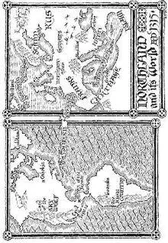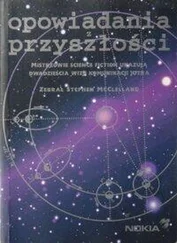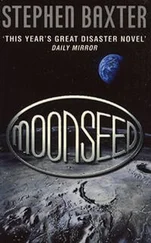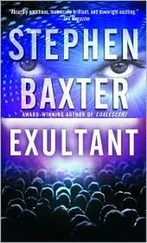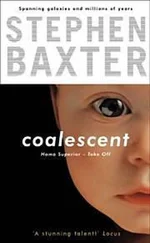It would be distributed, robust at every scale, clean and environment-friendly, and soaked with smartness. The administration began to fast-track enabling legislation, such as to force the utilities to purchase energy from any supplier. It was a great vision.
But in the longest term there was no place for nuke technology, and I knew immediately that my chosen field was a conceptual dead end. Maintenance projects might have seen out my working life, but all the creative energies, and some serious government R D money, would be focused, quite rightly, on the new Higgs-field technologies. Even as it came online my New York station was obsolete — and so, in a sense, was I, in my early thirties. I couldn’t bear it. I wanted to be in the frontline.
I argued with Morag at the time. She pointed out that we had a kid, and plans for more. The world didn’t owe me a living, she said, no matter how hard I chased my dreams.
But I wouldn’t listen. At age thirty-four, I quit my job and took an academic post at Cornell. I would be teaching the fundamentals of physics to reluctant students, while researching the new Higgs-field technologies.
It didn’t work out. There was already a whole generation of grad students armed with a hands-on knowledge of the new prototype unified-field energy systems — I was already too old, at thirty-four. I continued to make a living, but I’d got myself stuck up another blind alley, and was a lot less well paid. I was unhappy. Morag was justifiably unhappy, too, unhappy at my choices, at the way it had worked out. We loved each other, but I guess we took it out on each other. We didn’t mean to hurt Tom, but he was there. Call it friendly fire.
Then Morag got pregnant again. It was actually an accident, we weren’t sure how we could afford it. But we embraced it. It was going to be a new start, we decided, us and the kids. As Morag’s pregnancy developed I started to feel more content than I ever had before. Maybe I was starting to realize that there is more to life than childhood dreams, and whatever disappointment I felt was fading in the light of a richer joy.
And then, and then.
Grief doesn’t begin to describe it. It was like an amputation, maybe, a loss of half of myself. I went through the motions of my life, I ate and slept and rose again and got dressed and worked, but it all seemed purposeless, a charade. And my emotions raged, as uncontrollable and inexplicable as the weather. I even took it out on my memory of Morag, as if she’d somehow rejected me by dying. The ultimate jilting.
Oh, I looked after Tom, materially anyhow. I never disappeared into drink or drugs or VR fantasyland, the way a lot of people expected me to, I think. I kept working, going through the motions of class after class, semester after semester, one faceless cadre of students after another, though I gave up on the idea of any original work. I kept functioning. Maybe it was “stoicism,” as one artificial-sentience therapist assured me. The way I see it, I just kept up the shell.
After Morag’s death, I lost a decade. That’s how I look at it now. Then, one day, I found myself inhabiting my life again.
When I looked around I was suddenly in my forties. Tom, in his late teens, had grown away from me, not surprisingly. And if I thought my career was stuck when I was thirty-four, it certainly was now. It’s a depressing progression. By twenty I knew I would never be an astronaut. By thirty I knew I would never be a brilliant engineer. And by forty-five I was all I would ever be, for the rest of my life.
But I still needed money. I kept up my teaching at Cornell, but I put some feelers out for consultant work.
I got a lucky break when Shelley Magwood contacted me, out of the blue. She was in one of my early cadres of students at Cornell. By age thirty or so she had already made herself rich with shares in a start-up company specializing in aspects of the new Higgs-field technologies.
She carved me out consultancy assignments based on Higgs, and on my deeper experience in the nuclear field. For a transition period the two technologies would have to work together providing power to the common grid, and there were interfaces, protocols, loading balances, and other technical details to be worked out.
So the work kept coming. I did it well enough. Shelley said I had inspired her, as a teacher; without me she wouldn’t have carved out her own successful track, and so forth. I appreciated the morale boost, and the money. But we both knew Shelley was doing me a favor.
Then Shelley drew me into another of her ventures.
“I remember how you always used to throw in space technology applications into your lectures,” she told me. “It was obvious where your heart was. I think you might enjoy working on this.”
When the request-for-proposals for the project that became the Kuiper Probe arrived, Shelley’s consultancy company was small and nimble enough to be able to position itself to grab the work, but smart enough to see the potential for the future. “This is only a paper study,” she told me. “But it might get picked up. And even if not, we’re going to be paid to think about how to use Higgs to drive spaceships. We’ll be like Renaissance shipbuilders, holding a patent on sail technology, just as Columbus is about to embark…”
Shelley quickly put together a team with a number of freelancers, like me, and input from various other companies on specialized aspects. We rarely met; almost everything was done remotely, as Shelley’s “paper” study, actually a software abstraction, was driven to successive levels of design detail.
Kuiper was an obvious application for Higgs technology. But for me, it was no more than a start to use this miraculous energy source as a way to drive steam rockets. In the long-term, I dreamed, control of the Higgs field could give us control of inertia itself: we could banish mass. I imagined a day when vast spaceships would float from world to world, light as thistledown.
My God, I loved the work. It paid pennies, but it kept me sane.
Shelley emerged from her quick review. “So you haven’t screwed up too badly. But your mind must be with Tom. Mine would be.”
I tried to tell her something of my relationship with Tom. “Everything changed the day Morag died,” I said. “I took ten years to get over that. If I ever did. And Tom—”
“Tom thinks you miss the dead baby more than you love him. Is that it?”
That shocked me. “It isn’t true,” I said. “It never was.”
“Maybe not,” Shelley said. “But these things get stuck in your head.”
“How would you know?”
She looked a little uncomfortable. “When I was younger I had a lot of rivalry with my father. He was a tough character. Didn’t suffer fools gladly, he always said. But the trouble was he couldn’t distinguish between a genuine fool and a kid trying to learn.”
I listened to this carefully; she’d told me little about her past. “I think I remember him.”
“Oh, you met him during my college days. Parents and teachers. He was always on his best behavior, at open days and graduation. And he was never cruel. He was loving, but in his own way. But his way was a stream of put-downs. I grew up thinking I could never be good enough for him — until one day I decided I was going to beat him.”
“And that’s why you work yourself to the bone.” We’d had arguments about her work-rate and its effects on her health right back to our college days, when I tutored her.
“Anyhow that rivalry stuck. And then he died, before I had a chance either to beat him or give up the chase… Now I’m stuck with it.” She glared at me. “Nobody gets out of the past without scars. What you have to do is deal with it, and move forward. Right now Tom is all that matters.”
Читать дальше
